#duc de beaufort
Text

Louis, Anne, Philippe, Mazarin, Beaufort, and most importantly, Pistache
#dumas#vingt ans après#twenty years after#the three musketeers#les trois mousquetaires#louis xiv#anne d'autriche#philippe d'orléans#jules mazarin#francois de bourbon-vendôme#duc de beaufort#17th century#historical clothing
2K notes
·
View notes
Text
"The Imitation of M. de Beaufort"
During the Fronde, the buccaneering cleric, Jean François Paul de Gondi, cardinal de Retz, was arrested. His colourful memoirs recounting these events, while hardly an impartial account of his political machinations, do contain many thoughtful and informative musings about the nature and meanings of disgrace. He described how minutes before his arrest, one of his friends had heard that he was to be seized and had rushed to inform him. The cardinal later commented ruefully: "He could not find me, although he only missed me by a few seconds and those seconds would without doubt have preserved my liberty." For a prince of the Church there was clearly nothing dishonourable about fleeing should the opportunity present itself. The contrast with Bassompierre's passivity is striking, and personal temperament and political context were undoubtedly significant. The maréchal believed himself to have been disgraced by his master- Louis XIII, whereas Retz and the Condé, in both 1616 and 1650, had fallen foul of the queen regent or her ministerial favourite. They were, therefore, in possession of a certain amount of leeway when it came to justifying their acts of disobedience. An angry prince de Condé had made the distinction very clear in a quarrel with Marie de Medici in the presence of Louis XIII in February 1615. When the king sought to intervene, the prince had interrupted declaring: "You are my master, I would shed the last drop of my blood in your service, but as for the queen, I cannot say the same."
For those who were prepared to resist arrest or flee to avoid it, the logical next step was to consider escape once in custody. In February 1614, César de Vendôme, the adventurous illegitimate son of Henri IV, had achieved such a feat, setting a family precedent. On the night of 31 May 1648, César's own son, François de Vendôme, duc de Beaufort, who had been imprisoned in Vincennes since the failure of the "cabale des importants", five years earlier, thrilled the public with a daring escape. In a scene worthy of Dumas, he had overpowered his guards and despite suffering a heavy fall from a rope suspended from the château walls secured his freedom. His success inspired others, and when the Grand Condé was asked what books he wished to read while a prisoner, he memorably replied: "The imitation of M. de Beaufort."
The cardinal de Retz was another to follow that illustrious example, and he late recounted his various escape attempts in some detail. Of these, that designed by his ingenious physician was particularly eye-catching. According to Retz, the doctor had the idea of filing ‘the bar of a small window which was in the chapel where I attended Mass, and to attach some sort of mechanical contraption with the aid of which I could, in truth, have been lowered quite easily from the third floor of the keep’. Unfortunately this would only take him half way down the walls of Vincennes, and the intrepid scheme had to be abandoned. Another no less imaginative plot involved the cardinal hiding in a ‘hollow’ on top of a tower which had been filled with various bits of broken masonry. Once there a friendly guard, who had previously been bought off, would attach cords to the side of the wall where Beaufort had escaped. The guard would even produce a blood-stained sword as proof that he had wounded the fleeing prisoner and as the other jailers rushed to the walls they would see a group of horsemen in the distance waiting to welcome the fugitive. As a final coup de theâtre, cannons would be fired several days later at Mézières where Retz was known to have supporters as if to signal his safe arrival. During all of this commotion, the cardinal was to be snugly hidden in the tower, fortified with supplies of bread, wine, and patience until calm was restored. With the help of the corrupted jailer and his accomplices, he would then quietly slip out of the prison dressed as a woman, a monk, or in some similarly unobtrusive disguise.
Alas all too often the best-laid plans come to naught, and an unexpected change of guard led to the blocking of a stairwell that had been crucial to the plan. Undaunted Retz had continued to scheme and when he was transferred to the fortress of Nantes his opportunity finally came. One of his servants plied the guards with drink, and the cardinal escaped after a vertiginous descent of a bastion. His celebrations were marred by an accidental pistol shot, which led to him being thrown in mid-gallop from a startled horse, fracturing, or possibly dislocating, his shoulder and leaving him free albeit in excruciating pain. To conclude his truly memorable adventure, Retz eventually made his way by ship to San Sebastián in Spain from whence he began the journey to Rome.
The cardinal could tell a good tale, but behind the derring-do there are some serious questions for the history of disgrace. On one level, his single-minded determination to escape reflects the peculiar circumstances of a Regency and especially of civil war, and Louis XIV’s later emphasis on the personal nature of his power and authority made such behaviour far more difficult to justify.
Julian Swann- Exile, Imprisonment or Death- the Politics of Disgrace in Bourbon France.
#xvii#julian swann#exile imprisonment or death: the politics of disgrace in bourbon france#cardinal de retz#bassompierre#louis xiii#marie de médicis#henri ii de bourbon condé#césar de vendôme#françois de vendôme#duc de beaufort#cabale des importants#louis ii de bourbon condé#la fronde
0 notes
Text
Heureusement qu'il corrige ses fautes de français avec la pointe de son épée.
A. Dumas, Vingt ans après
#i have to say i love this little moment when it is shown that Aramis also respected duc de Beaufort#'końcem szpady naprawia wady wymowy' brzmi jeszcze lepiej tbh
1 note
·
View note
Text
Me, innocently looking up Les cinq diables bc it was at the cannes film festival and is gonna be part of a film festival programm in my city:

MERWAN RIM FROM MOZART L'OPÉRA ROCK CLOWN AND LE DUC DE BEAUFORT FAME????
#I didn't even know he starred in movies#and I was right not to know#bc as it turns out his only other work on screen beside this highly acclaimed indie film#is a horrible 3d animated children's movie with 2.6 stars on letterboxd#dude how the fuck do you pay your bills???#anyway cannot wait to see im in this bc I have no idea what to expect
4 notes
·
View notes
Text
François de Vendôme, duc de Beaufort (16 January 1616 – 25 June 1669) was the son of César, Duke of Vendôme, and Françoise de Lorraine. He was a prominent figure in the Fronde, and later went on to fight in the Mediterranean. He is sometimes called François de Vendôme, though he was born into the House of Bourbon, Vendôme coming from his father's title of Duke of Vendôme.
Beaufort is one of the characters of Twenty Years After and The Vicomte de Bragelonne, Alexandre Dumas's sequels to The Three Musketeers. The first book chronicles his escape on Whitsunday - plotted by Athos - and lampoons his tendency to utter malapropisms.
(Wikipedia)

12 notes
·
View notes
Photo

Le Royal Louis by Maître Rodolphe in : Histoire de la Marine française illustrée, Larousse, 1934
The Royal Louis was a ship of the line of the French Royal Navy. She was built in Toulon between 1666 and 1669 under the direction of Rodolphe Gédéon and served as the flagship of the French fleet in the Mediterranean.
Although she was intended at the time of her construction to be the flagship of François de Bourbon-Vendome, Duc de Beaufort, for the Crete campaign of 1669, she was not completed in time and was not used until 1677. From December 1676 to April 1677 she was refitted at Toulon; four of her 24-pounder guns were replaced by four 36-pounders on the lower deck, two more 18-pounders were added to the middle deck and two 6-pounders were removed from her quarterdeck, leaving her a ship of 104 guns.
On 11 May 1677, under the command of Abraham Duquesne, she sailed from Toulon to Messina in Sicily at the head of a small squadron to support the rebels against Spanish rule. After returning to Toulon, she was not used again until she was withdrawn from service in 1691. She was broken up in Toulon in 1697 after being replaced by a new first rate ship of the same name.
94 notes
·
View notes
Photo
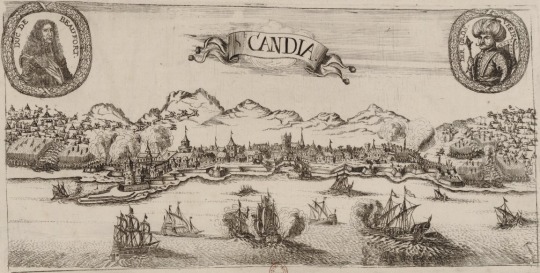
Vue du siège de Candie en 1669 au moment de l'intervention française avec l'escadre du duc de Beaufort.
2 notes
·
View notes
Photo




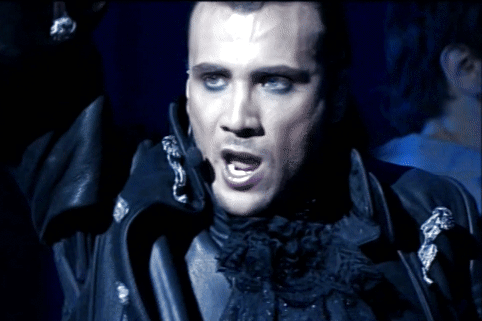





MEN OF FRENCH MUSICALS : MERWAN RIM
Le Duc de Beaufort (Le Roi Soleil)
27 notes
·
View notes
Text
French Musicals Tag.
It is hard for me to give only one answer to each question, so I decided I was going to pick 1 to 3 answers. The musicals I took into consideration were: Roméo et Juliette, Notre Dame de Paris, Mozart l’Opéra Rock, 1789 - Les Amants de la Bastille and Le Roi Soleil. I tried to mix it up a little bit, so that I didn’t end up choosing the same musical all the time.
1. Favourite Musical: Roméo et Juliette, Notre Dame de Paris. I love both of these comédies musicales a lot. NDDP was the first one I ever saw, and it has a special place in my heart. Roméo et Juliette is the one I think about the most, and always want to rewatch.
2. Favourite Troupe: Roméo et Juliette (2001). I could have chosen NDDP for this as well, but I just adore the cast in the original ReTJ.
3. Favourite Male Singer: Tom Ross (RetJ), Damien Sargue (ReTJ), Bruno Pelletier (NDDP). I stopped at three because I promised I would, but there are many many talented male singers in these musicals.
4. Favourite Female Singer: Cécilia Cara (ReTJ), Victoria Petrosillo (Le Roi Soleil). Once again, it’s hard to just pick two!
5. Favourite Actor: Mikelangelo Loconte, Yamin Dib (Mozart l’Opéra Rock) Rosenberg is really funny, and I love the way Mikelangelo plays Mozart, so here it goes.
6. Favourite Actress: Réjane Perry (ReTJ). Amazing singer as well, I was sad to find out that she passed away in 2003.
7. Favourite Male Character: Tybalt (ReTJ). I mean, does it even need saying? I was thinking of putting somebody else here and him for favourite villain, but he is indeed my favourite character, so it makes much more sense to put him here, where he belongs.
8. Favourite Female Character: Juliette Capulet (ReTJ), Isabelle (Le Roi Soleil)
9. Favourite Understudy/Alternate: Diane Dassigny (MOR). I saw her in MOR 3D and to be honest liked her more than Claire Pérot.
10. Favourite Villain: Frollo (NDDP). I love Daniel Lavoie, and Frollo’s songs are just beautiful.
11. Favourite Song: this is impossibile, I am going to say Lune (NDDP), Le Duel, J’ai Peur (ReTJ), they are among my favourite in my two favourite musicals. (I briefly talked about my favourite songs from these musicals here and here)
12. Favourite Love Song: Un Jour, L’Amour Heureux (ReTJ). I mean, how could have I not chosen ReTJ for the love song?
13. Favourite Guilty Pleasure Song: I don’t consider any of them guilty pleasure songs, really? I’d say Les Solos Sous Les Draps, maybe (MOR). It’s sort of fun and silly and the title is a sexual reference so I guess it fits the category. Or maybe A’ quoi tu danses (1789), for dancing Robespierre.
14. Favourite Dance Sequence / Number: Le Bal (ReTJ 2001). I think it’s beautiful, I love the choreography and the colours, and I could rewatch it an inordinate amount of times to see what all the characters are up to.
15. Favourite Opening Number: super hard because the opening numbers are always amazing! I really enjoy all of them a lot. I think my favourite are Le Temps des Cathédrales (NDDP), Vérone (ReTJ)
16. Favourite Act 1 Finale: Aimer (ReTJ). This one wasn’t hard to answer!
17. Favourite Finale/Curtain Call: for the curtain call itself, Roméo et Juliette, because I love Benvolio presenting all the characters, and then Aimer/Les Rois du Monde (2001) and Les Rois du Monde/Avoir 20 ans (2010). For the final song, NDDP (Danse Mon Esmeralda) or MOR (Vivre à en crever).
18. Favourite Music Video: Ça ira mon amour (1789). I really liked Desmoulins as well. The official videos for the songs tend to be a bit weird in general.
19. Favourite Canon Pairing: Roméo et Juliette (ReTJ), Duc de Beaufort et Isabelle (Le Roi Soleil).
20. Favourite Non-Canon Pairing: probably Mozart and Salieri (MOR). I guess? I love seeing all the fanart.
21. Favourite Costume: I am doing it off the top of my head, because I would need to look at all the costumes of all the productions.
For male costumes, I love Tybalt’s costume in ReTJ 2001, both the red leather one and the one he is wearing at the ball (the trousers are the same). Also, the Duc de Beaufort’s black coat in Le Roi Soleil. And Mozart’s red coat in Je Dors sur des Roses.
For female costumes: Constance’s dress in Six Pieds Sous Terre and Nannerl’s dress in Penser l’Impossible (MOR).
22. Favourite Set Design: Roméo et Juliette 2001 (really, I think it’s sort of simple yet effective and I am not a big fan of the towers in the revival), 1789 - Les Amants de la Bastille, which was quite ingenious!
23. Favourite Choreography: That’s super difficult. I am ruling ReTJ out, because I chose Le Bal for the dance scene. The first musical to come to mind was Le Roi Soleil, because of its beautiful coreographies, and 1789 has great choreos, too. The thing is, when I have to think about a single choreography, my mind goes to Le Bien Qui Fait Mal (MOR). It’s probably not even my favourite, but it sure stays in your memory!
24. Favourite Foreign production: I have only seen Italian NDDP and Italian and Hungarian ReTJ (plus I listened to English ReTJ), so my choice is Italian Notre Dame de Paris! I think it’s a very good production.
25. An Underrated Musical: well, NDDP is super popular with the public all over the world. I think it’s the most popular French musical ever probably, and definitely the most popular out of the 5 I’ve chosen, but I have to say I don’t see many posts on Tumblr (maybe I am just using the wrong tags). Also, everytime I try to look it up in the tags I see tons of posts about the Hunchback of Notre Dame musical. People, if you loved Hunchback you need to watch NDDP.
26. An Underrated Pairing: maybe Mozart and Constance (MOR). I find posts about him and Salieri much more often (understandably, but still)
27. An Underrated Character: I am not sure she is underrated, but I am going for Fleur-de-Lys (NDDP).
28. An Underrated Song: oh, I am not sure I know which ones are underrated. Maybe Tu Dois Te Marier, 2001 version (ReTJ). I love that it’s so upbeat.
29. Fancast one musical: I can’t possibly think of doing this one, it would require too much thinking!
30. Free Choice. Okay, my free choice is: most random thing you love about a musical. And for me it is the way Mercutio is pronounced in French, I LOVE IT.
23 notes
·
View notes
Photo
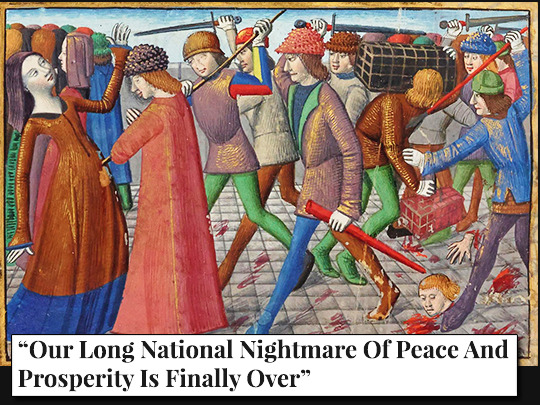

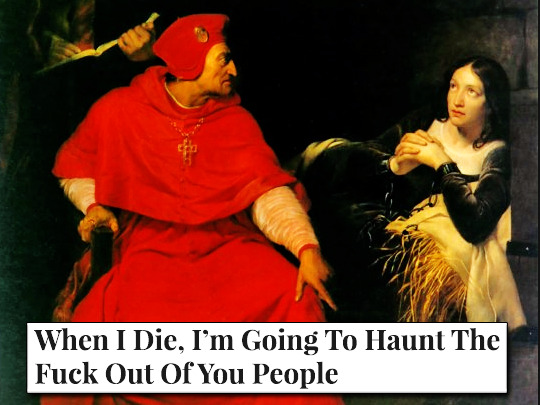


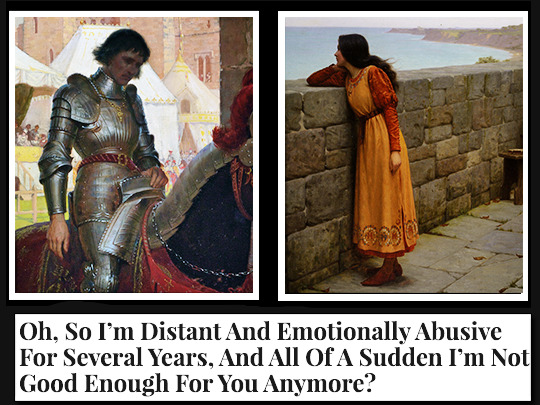




15th century England and France + The Onion headlines
#15th century#middle ages#medieval#the onion#the onion headlines#historyedit#french history#english history#european history#history#nanshe's graphics
45 notes
·
View notes
Photo
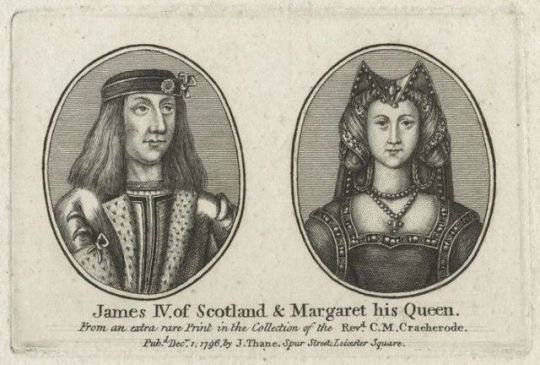
On May 28th 1503 a Papal Bull was signed by Pope Alexander VI confirming the marriage of King James IV and Margaret Tudor and the "Treaty of Everlasting Peace" between Scotland and England.
From an early age, Margaret was part of Henry VII’s negotiations for important marriages for his children and her betrothal to James IV of Scotland was made official by a treaty in 1502 even though discussions had been underway since 1496. Part of the delay was the wait for a papal dispensation because James’ great-grandmother was Joan Beaufort, sister of John Beaufort, who was the great-grandfather of Margaret Tudor. That made James IV and Margaret Tudor fourth cousins, which was within the prohibited degree. Patrick Hepburn, the Earl of Bothwell, acted as a proxy for James IV of Scotland for his betrothal to Margaret Tudor at Richmond in January 1502 before the couple was married in person.
James was dashing, accomplished, highly intelligent and interested in everything, James IV of Scots enjoyed himself with mistresses while manoeuvring to secure a politically useful bride, so the marriage was not just an "English thing".
Our King was 30, his bride was what has been described as "a dumpy 13 year old".
I'll dip into the "newspaper" of the day in Grafton's chronicle the following was written....
"Thus this fair lady was conveyed with a great company of lords, ladies, knights, esquires and gentlemen until she came to Berwick and from there to a village called Lambton Kirk in Scotland where the king with the flower of Scotland was ready to receive her, to whom the earl of Northumberland according to his commission delivered her." he went on "Then this lady was taken to the town of Edinburgh, and there the day after King James IV in the presence of all his nobility married the said princess, and feasted the English lords, and showed them jousts and other pastimes, very honourably, after the fashion of this rude country. When all things were done and finished according to their commission the earl of Surrey with all the English lords and ladies returned to their country, giving more praise to the manhood than to the good manner and nature of Scotland."
Not exactly flattering words!
The wedding finally took place for real (after several proxy marriages) on 8 August, 1503 at Holyrood House in Edinburgh. Margaret was officially crowned Queen in March 1504. The Scottish poet William Dunbar wrote several poems to Margaret around this time, including “The Thistle and the Rose”, “To Princess Margaret on her Arrival at Holyrood”
Now fayre, fayrest of every fayre,
Princes most plesant and preclare,
The lustyest one alyve that byne,
Welcum of Scotlond to be Quene!
Margaret was apparently homesick and not happy in her early days in Scotland, but the couple settled down to married life, there first child, James was born four years later, he died within the year, their second, a daughter fared little better she never survived a day. In 1309 another son only lived to be nine months old, such was the difficulties of trying to produce and heir, it's a wonder the human race survived, what with mortality rates being so high in the nobility, one only wonders how high it would have been for the ordinary citizen of Scotland?
Meanwhile Margarets father passed away and Henry VIII took the throne.
Margaret’s next child was born on April 11, 1512 at Linlithgow and named James. He survived childhood and was to become King James V and father of Mary.
As for "Treaty of Everlasting Peace" it lasted around 10 years, in the first few years of Henry VIII’s reign, the relations with Scotland became strained, and it eventually erupt in 1513, when Henry VIII went to France to wage war, this invoked The Auld Alliance and James IV, Henry VIII's brother-in-law marched his army into England only to be disastrously cut down on September 9th at Flodden Field, with too many of our Scottish Knights to count. The Queen gave birth to another son, Alexander the following April, but things would turn sour for her.
Margaret, then regent, remarried into the powerful Douglas family, the Scottish Parliament then removed her as Regent a pregnant Margaret fled Scotland in 1515, her sons were taken from her before she left. She was given lodgings by her brother at Harbottle Castle, where she gave birth to daughter, Margaret Douglas, who herself played a big part in Scottish history, becoming mother to Henry Stuart, Lord Darnley.
That wasn't the last we had seen of Margaret Tudor though, she returned to Scotland with a promise of safe conduct in 1517 but her marriage to Douglas was a disaster, he had taken a mistress while she was in England.
In 1524 Margaret, in alliance with the Earl of Arran, overthrew Albany's regency and her son was invested with his full royal authority. James V was still only 12, so Margaret was finally able to guide her son's government, but only for a short time since her husband, Archibald Douglas, came back on the scene and took control of the King and the government from 1525 to 1528. This would all come back to bite the ambitious Douglas family in the bum
In March 1527, Margaret was finally able to attain an annulment of her marriage to Angus from Pope Clement VII and by the next April she had married Henry Stewart, who had previously been her treasurer. Margaret's second husband then arrested her third husband on the grounds that he had married the Queen without approval. The situation was improved when James V was able to proclaim his majority as king (he was 16 at the time) and remove Angus and his family from power. James created his new stepfather Lord Methven and the Scottish parliament proclaimed Angus and his followers traitors. However, Angus had escaped to England and remained there until after James V's death.
Margaret's relationship with her son was relatively good, although she pushed for closer relations with England, where James preferred an alliance with France. In this, James won out and was married to Princess Madeleine, daughter of the King of France, in January 1537. The marriage did not last long because Madeleine died in July and was buried at Holyrood Abbey. After his first wife's death, James sought another bride from France, this time taking Marie de Guise (eldest child of the Claude, Duc de Guise) as a bride. By this same time, Margaret's own marriage had followed a path similar to her second one when Methven took a mistress and lived off his wife's money.
On October 18, 1541, Margaret Tudor died in Methven Castl. probably from a stroke. Margaret was buried at the Carthusian Abbey of St. John’s in Perth. Although Margaret's heirs were left out of the succession by Henry VIII and Edward VI, ultimately it would be Margaret's great-grandson James VI who would become king after the death of Elizabeth.
26 notes
·
View notes
Photo
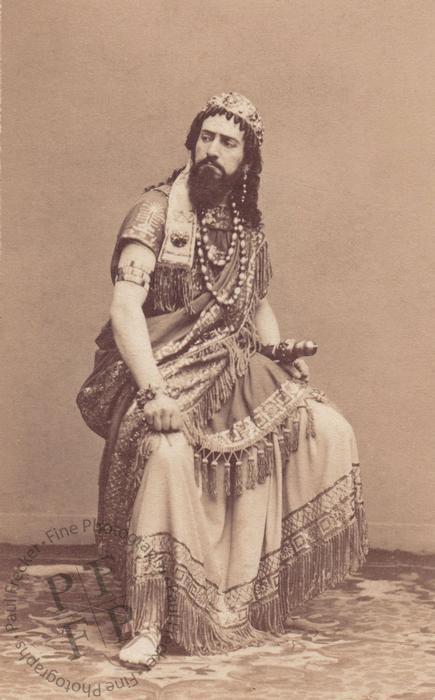
Louis-Henri Obin (1820-1895) - , was a French operatic bass. He created some of the most notable roles in French grand opera at the Paris Opera, including the part of King Philip II in Verdi's Don Carlos.
Born in 1820, the lyric bass Louis-Henri Obin began his voice training at the conservatory in Lille, and then continued at the Paris conservatory under the direction of the tenor Louis-Antoine Ponchard, who taught amongst others Henri-Bernard Dabadie, Jean Baptiste Faure, Giovanni Mario, Rosine Stoltz and Jean Baptiste Weckerlin.
His debut on the stage was on 6 December 1844 at the Grand Opéra in Paris, in the role of Lord Seyton for the creation of the opera Marie Stuart by Niedermeyer, though some references place his debut in September of the same year as Brabanio in Rossini’s Otello.
Before the retirement from the stage of the first bass Nicolas-Prosper Levasseur in 1852, Obin participated in two more creations in a secondary role. On 6 December 1850 he sang Bocchoris at the Opéra-Comique in Auber’s L'enfant prodigue, and on 23 April 1852 he sang Nicéphore in Halevy’s Le juif errant. After he had taken over as first bass, on 2 May 1853 he created the role of the Duc de Beaufort in Niedermeyer’s Le Fronde, followed on 17 October 1853 by the title role in Le maître chanteur by Armand Limnander. On 9 December 1853 he was Basile in the French adaptation of Rossini’s Barbier de Seville (the adaptation was only staged once due to the opposition of the director of the Théâtre Italien).
It is, however, from 1855 on that he left his real mark on the history of opera, with the creation on 13 June of the first Grand Opéra à la Française written by Verdi specifically for Paris, Les vêpres siciliennes, in which he took the role of Procida. He followed this on 4 March 1859 with the première of Felicien David’s Herculanum and then on the 9 March 1860 with Pierre de Medicis, composed by the Polish prince Josef Poniatowski, a work which enjoyed an enormous success in its time.
On 28 April 1865 he took part in the première of Meyerbeer’s L'Africaine, with such other Parisian greats of the age as Marie Saxe, Marie Battu, Emilio Naudin et Jean-Baptiste Fauré. On 11 March 1867, he created the role of Philippe II in Verdi’s last great Parisian opera Don Carlos, with Marie Saxe as Elisabeth de Valois and Jean-Baptiste Fauré as Rodrigue.
Apart from the creation of so many important roles, Obin also sang in numerous other works that were part of the repertory of the day, in particular the title roles in Don Giovanni and Moïse et Pharaon.
He died in Paris on 9 November 1895
0 notes
Text
Every Character in the d’Artagnan Romances with Mostly Useless Superpowers. (with spoilers!)
Made with @robininthelabyrinth and @eugeniedanglars.
In this universe, superpowers are distributed randomly, but super-powered people tend to join the aristocratic classes for snobbery purposes. Gascons tend not to have powers, instead choosing to run at the enemy screaming.
The Three Musketeers:
d’Artagnan: No powers. Who needs powers when you can just hit things very hard?
Porthos: Super-strength. Like. Is there any other option?
Aramis: Low-level telepathy so that people trust him and are charmed. Also, he’s a supervillain, but that’s nothing new.
Athos: Probability manipulation, but dependent on how noble and honorable and melodramatic he’s being. He does not actually know that; he’s just like this as a person. The probability manipulation also just makes events play out like the drama Athos believes he’s in rather than anything under his control.
Planchet: No superpowers.
Mousqueton: Bedazzling--he can make things glittery. This is why Porthos hired him.
Bazin: Makes an automatic negative impression on people. His personality doesn’t help.
Grimaud: An imprinting power, which imprinted on Athos. Whatever Athos wants or needs, Grimaud can get. Athos wants strawberries from across the globe? Grimaud can get them. Unfortunately, Athos never wants anything. Grimaud is okay with that.
Milady: Can instantly pinpoint someone’s weakness on sight. This is a fairly weak power, but Milady is just ruthless and intelligent enough to use it devastatingly.
Kitty: She can hover.
Rochefort: Like d’Artagnan, no powers. Sadly, sarcasm is not a power.
Constance Bonacieux: Being forgotten--one must make an effort to remember her. This is not useful to her in the slightest, particularly since her enemies make the effort.
Monsieur Bonacieux: ...Inexplicable narrative contrivance? ...no powers.
Monsieur de Treville: No powers.
Cardinal Richelieu: Can talk to cats, and uses them as spies. Also, he moves silently.
Louis XIII: He tested positive for superpowers at a young age, and everyone thought he’d get a powerful, martial superpower. His power is that he can make any flower smell like any other flower. That’s it. He is incredibly bitter about this.
Anne of Austria: She can make plants grow. As a noblewoman, she can’t use these powers in an offensive, or even useful, capacity, so she uses them to make gorgeous bouquets and have flowers grow as she walks. Louis XIII makes them smell like a corpse flower (the worst-smelling flower in existence.)
Duke of Buckingham: No powers.
Lord de Winter: Nope.
Tom Felton: If he so chooses, he can be totally unnoticeable. However, Puritans believe that superpowers are the devil’s work, so he never uses his. Milady gets him to use them in order to kill Buckingham.
Executioner of Bethune: Can throw fireballs. Lives in a wooden town.
Madame de Chevreuse: The more power she gets and the more intrigue she is embroiled in, the younger she stays.
Twenty Years After:
Mordaunt: Walking mood ring--he can tell what people are feeling. Unlike his mother, however, he does not use his powers to the fullest. Or even just well, honestly.
Mazarin: No powers, and hates it, but not as much as Louis XIII and Louis XIV--the Louis-Louis, if you will--hate theirs.
Charles I: Perfect hair, all the time. It doesn’t help him when his head cut off--when his head is held to the crowd, it is the first time his hair has been messy.
Duc de Beaufort: He can always get into a fight when he wants to.
Oliver Cromwell: As a Puritan, even if he has powers, he doesn’t use them.
Raoul de Bragelonne: Like his father, probability manipulation. Raoul’s is mood-based; when he is happy, he has good luck, and when he is sad, he has bad luck. Unfortunately, he is Athos’ son.
Vicomte de Bragelonne (all books):
General Monk: No powers.
Louis XIV: No superpowers, and very upset by this. He spreads the rumor that he can shine like the sun and merely chooses not to, but this is a lie. He is totally powerless.
Marie-Theresa: Minor telekinesis, but as a woman, can only use her powers for party tricks.
The Man in the Iron Mask (Philippe): No powers.
Madame (Henrietta): She sparkles. Not specific sparkles, just a general sparkly-ness.
Charles II: Similar to his sister, Charles II is glittery--“The King of Bling.”
Duke of Buckingham (younger): Like his father, no powers.
Monsieur (Philippe): His clothing is always perfect. He can run into the middle of a battle and still look glorious and gleaming while everyone else is sweaty and dirty. He has developed the fashion sense to flaunt this. Louis XIV absolutely hates this.
Chevalier de Lorraine: Once a week, he can hear a juicy piece of gossip.
de Guiche: He can make it rain, but he can’t make it stop.
de Wardes: He can see in the dark. He declines to tell anyone about this, even when duelling in the dark.
Manicamp: He is unobtrusive, and seems like he belongs anywhere he is. When he's around a group, he's with them, for better or for worse. If he talks to someone, he is generally accepted--"ah yes, Manicamp"--and people generally don't notice where his interests lie unless they think about it.
Louise de la Valliere: She can create spikes on things, which could have been useful if only she were anyone else. As it is, she uses her powers for decoration. Louis XIV is still upset about it.
Athenaïs de Tonnay-Charente: No powers. That's why Louis likes her so much.
Saint-Aignan: No powers. That’s why Louis likes him so much.
Montalais: Can see several minutes into the future.
Malicorne: Farsight--he can see things that are far away. He also taught himself how to read lips.
Colbert: No powers.
Fouquet: The more people like him, the more eloquent he is--he is wittier, funnier, a better poet, etc. His power literally depends on his friends.
Madame de Belliere: She is excellent at games involving throwing things--paper airplanes, frisbee, skipping rocks, tossing a ball in a cup. However, she’s terrible at games with hitting things, like badminton.
Vatel: Perfect at organizing, but that doesn't mean that what he organizes always works out, even though he thinks it does.
Trüchen: No powers.
(A short ficlet written in this universe is here.
If anyone wants to do anything in the universe or ask about a character we missed, please do, just tell me!)
#the d'artagnan romances#d'artagnan#athos#porthos#aramis#the three musketeers#twenty years after#the vicomte de bragelonne#the hippo roars
49 notes
·
View notes
Text

May 31
[1279 BC] Ramesses II, also known as Ramesses the Great became Pharaoh of Ancient Egypt.
[1321] King of Sweden, Birger Magnusson died.
[1410] King of Aragon and Sicily, Martin died.
[1433] Sigismund is crowned emperor of Rome.
[1434] King of Poland, Władysław II Jagiełło died.
[1443] English noblewoman, Margaret Beaufort was born.
[1469] King of Portugal, Manuel I was born.
[1557] Tsar if Russia, Fyodor I was born.
[1594] Italian painter, Tintoretto died.
[1613] Elector of Saxony, John George II was born.
[1678] The Godiva procession became part of the Coventry Fair.
[1740] King of Prussia, Frederick William I died.
[1753] French statesman, Pierre-Victurnien Vergniaud was born.
[1754] Marshal of France, Dominique-Catherine, Marquis de Pérignon was born.
[1790] The United States established copyright law.
[1809] French General, Jean Lennes, duc de Montebello died.
[1827] French politician, Pierre-Louis Prieur died.
[1859] The Great Clock housing Big Ben started keeping time.
[1879] New York's Madison Square Garden opened its doors for the first time.
[1889] A flood ravaged Johnstown, Pennsylvania, causing more than 2200 deaths.
[1910] Louis Botha formed the first government of the Union of South Africa.
[1913] The 17th amendment to the U.S. Constitution, providing for direct election of senators, was ratified.
[1915] A German zeppelin made an air raid on London.
[1916] The Battle of Jutland, an encounter between British and German naval fleets in World War I, began.
[1921] The Tulsa race massacre began in Oklahoma.
[1923] Rainier III, Prince of Monaco was born.
[1930] American actor and director, Clint Eastwood was born.
[1935] 7.7 magnitude earthquake destroyed Quetta in Balochistan, British India (now Pakistan), killing an estimated 40,000 people.
[1947] Communist seized power in Hungary.
[1962] Former SS commander, Adolf Eichman was hung by the State of Israel.
[1970] 7.75 Ancash earthquake off coast of Peru kills 66-70,000 and sets off world's deadliest avalanche.
[2005] Deep Throat revealed himself to be former FBI agent Mark Felt.
[2009] Millvina Dean, the last known person to have survived the sinking of the Titanic in 1912, died.
[2013] The widest tornado ever recorded hit El Reno, Oklahoma.
[2014] Psy's "Gangnam Style" became first video to reach 2 billion views on YouTube.
0 notes
Text
TDS® : The first of the Ultra races of the week gets off!
(adsbygoogle = window.adsbygoogle || []).push({});
The TDS got off to a dream start Wednesday morning at 4am in Courmayeur. As is the custom, the Italian city hosts the start of the TDS®, which is set to be the most technical and difficult race of the UTMB® week. 1,600 runners set off and will attempt to reach the finish line in France in under 42 hours. This year, the race offers a longer passage through the Beaufortain and a major challenge (144 km long with 9,100m ascent).
(adsbygoogle = window.adsbygoogle || []).push({});
Sur les Traces des Ducs de Savoie (TDS®)
After crossing the beautiful Italian passages (Mont-Favre ridge, Lac Combal), the athletes will enter the French side on a level with the Petit Saint Bernard pass to reach Bourg-Saint-Maurice.
It is at the Cormet de Roselend that the runners will dive into the Beaufortain and get to discover the massif and its climbs, such as those of Pas d'Outray, known as a belvedere of the Savoyard massif.
The runners will need to be able to manage their race carefully to complete the 23 km and 1,800 m of additional ascent and reach the finish line in Chamonix in under 42 hours. What an adventure in lies ahead!
(adsbygoogle = window.adsbygoogle || []).push({});
Among the favourites international runners, you can find Dmitry Mityaev (Russia), Hallvard Schjølberg (Norway) and Hillary Allen (USA) in the women's category.
On the side of the accompanying persons and spectators, the race follow-up is facilitated with the relocation of the Cormet de Roselend's base in Beaufort, where the supporters will be able to benefit from the village's activities and infrastructures.
The arrival of the first men is scheduled at 11pm and at 1am for the first ladies.
Live results
UTMB® Live utmbworld.com
(adsbygoogle = window.adsbygoogle || []).push({});
(adsbygoogle = window.adsbygoogle || []).push({});
READ NEXT
0 notes